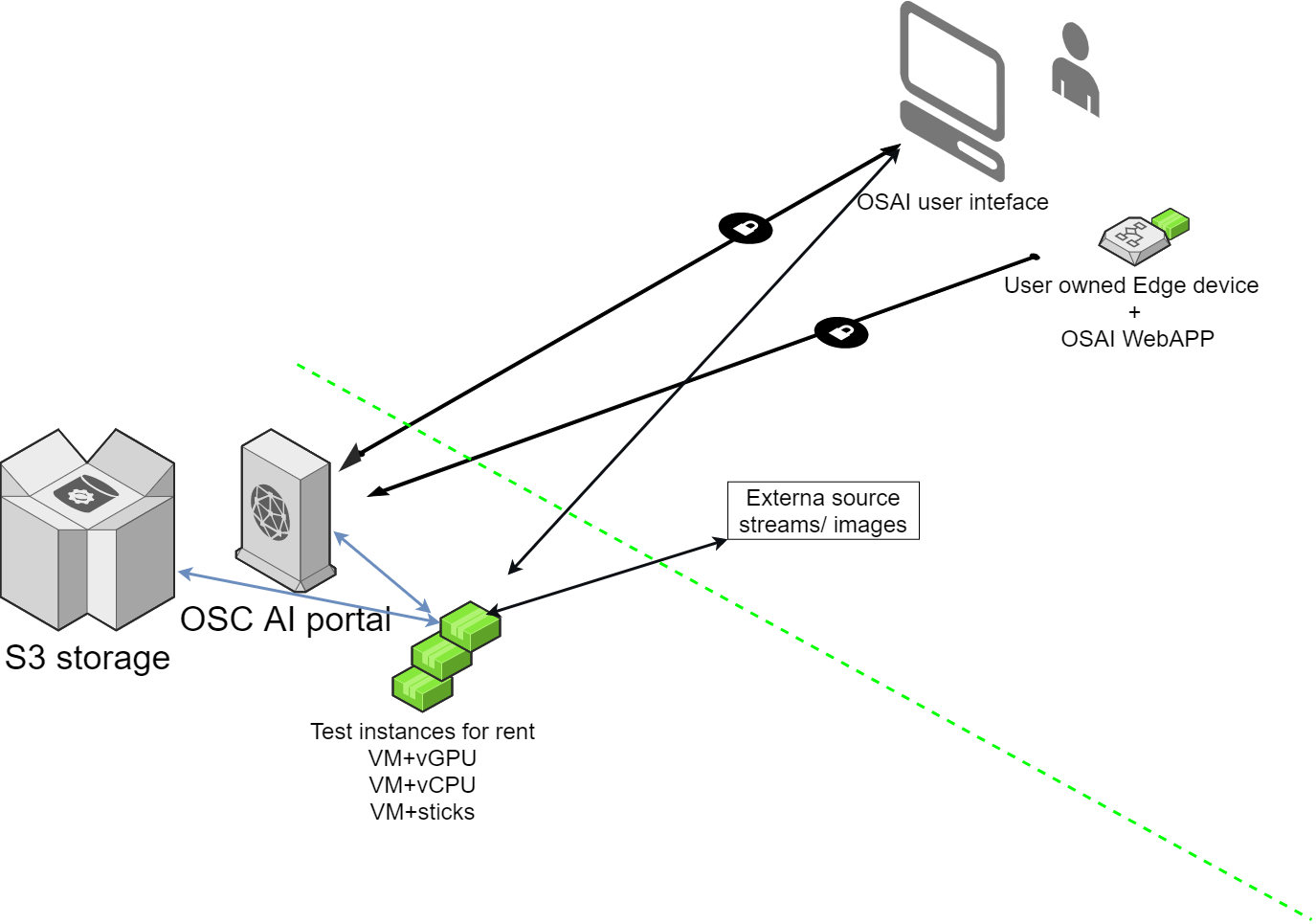#
Main actions
The general concept of the ONESTEP AI service is based on several actions:
- Preparing and optimizing the dataset
- Creating and training the AI model
- Testing the model live
- Predicting
If you want our application to perform any of the above actions, you will receive a notification that the task has been added to a queue and will wait until a worker becomes available to process it. A worker is a machine that performs tasks in the background while the application is running and processing other requests. See the Glossary for more information.
#
Preparing the dataset
To get started, upload the images you want to create a dataset from. You can have multiple datasets. Freely add, delete and edit them by adding and deleting the images. You can annotate objects on images within the datasets, assign categories to them, and combine categories from multiple datasets together. You can also augment data based on the operations you choose. All the datasets you own are stored in your account.
For more detailed information, go to the Datasets section.
#
Training the model
Once your datasets are ready, the next step is to create and train a model. The ONESTEP AI service offers classification and detection models from popular frameworks (currently Keras, PyTorch, and Darknet, but more will be added). If you are not sure how to configure the parameters of the training process, use our wizard with recommended settings in Basic mode. However, if you want full control over the process, use the Advanced mode.
If you are concerned about the repetitiveness of the training parametrization process, use Templates that you will be able to recall in subsequent training sessions (see the Model Templates section for details).
For more detailed information, go to the Model Training section.
#
Testing the model
The next step in the process is to test the model on edge devices. The diagram below shows how we are able to make this happen.

You can rent a device from our cloud or use your own - see the articles Adding your own device to ONESTEP AI and Renting a cloud device.
We support the following types of edge devices:
- NVIDIA Jetson Nano optionally with both:
- Intel Neural Compute Stick 2 (Intel NCS2)
- Google Coral TPU USB-Accelarator
- OSAI virtual machine with GPU:
In addition to the above devices, we offer the Artificial Intelligence Device Web Service (AI'VIEWER) Web App software for testing models created in the OSAI service.
For more detailed information, go to the Live Testing section.
#
Prediciting
The final step is prediction. A predictor allows you to annotate or categorize images in a dataset using a previously trained detection or classification model. Select the minimum confidence level, which determines what minimum precision is sufficient to accept a given prediction and create an appropriate classification category or label for an image based on it, and the predictor mode, which determines which images in the dataset will be checked by the predictor and whether old labels will be replaced or kept with the addition of new labels.
For more detailed information, go to the Predictor section.
#
Continuous improvement loop
Any of the above steps can be repeated to improve the results. For example, you can add more images to the dataset, create new annotations, make and train a new and better model, test the model on different edge devices, or use the predictor on a recently improved model. The continuous improvement loop is a key aspect of AI development. It refers to the process of continuously refining and improving the AI model to increase its accuracy, efficiency, and effectiveness.